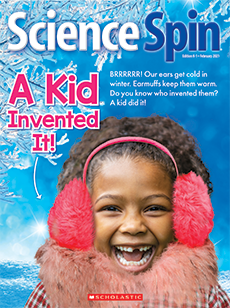September 2025
Animal Snack Test
Academic Standards
Reading Objective:
Students will identify steps scientists use to conduct investigations as they read about a scientist who did an animal snack test.
Next Generation Science Standards:
Practice 3: Planning and Carrying Out Investigations
K-LS1-1: What animals need to survive
1-LS1: How animals meet their needs so they can survive and grow
Vocabulary:
test, observe, record, ungulate
Use your Science Spin to find the best answer to each question.
1. What was Álvaro’s question?
(Which animal could get the snack out of the cup?)
2. How did Álvaro do his test?
(He observed what the animals did.)
3. What kind of animal did best in the snack test?
(camel)
4. Which animal did worst? Draw it!
- Álvaro likes to see which animals want to try something new, like getting a lid off a cup.
- Animals like sheep and gazelles are scared of new things. They are hunted in the wild. For them, new things can mean danger, so it’s smart to be scared.
- The goats that did best on the test were the ones who were not popular with the other goats.
Materials: An animal you can observe, pencils, clipboards, copies of the skill sheet.
Overview: Like Álvaro, students will observe an animal eating. Your scientists can skip the cups with lids! Just head outside, try to spot an animal, and watch it look for food. (Alternative: Observe a tree or other item in nature, or use animal photos/videos indoors.)
Directions:
- Before you leave the classroom, tell students they’ll go outside to be animal scientists like Álvaro. Remind kids that Álvaro observes animals to learn about them.
- Give each student a clipboard, a pencil, and a copy of the skill sheet. Ask kids what animals they think they might see. Tell them that if they’re quiet, they will be able to observe more.
- Head outside and find an animal. Do they see or hear any birds, squirrels, or insects?
- When students spot an animal, remind them to observe quietly without touching.
- Is the animal eating or looking for food? If not, what is it doing?
- Record observations on the skill sheets.
